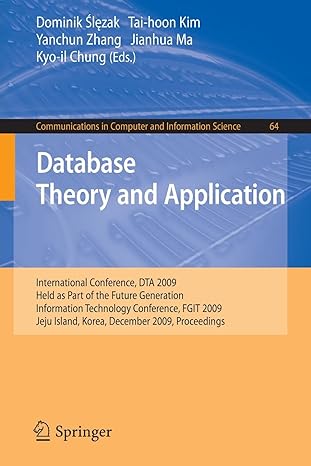Answered step by step
Verified Expert Solution
Question
1 Approved Answer
Consider a 2 5 6 Byte, direct mapped cache which has 4 - byte cache blocks ( C , B , S ) = (
Consider a Byte, direct mapped cache which has byte cache blocks CBS Assume the cache uses LRU replacement policy and a WBWA write policy. Assume the compiler optimizes the sum, product, and loop variables into registers. Answer the following questions based on the evaluation of the product loop below assuming the preceding code sum loop has made its modifications to the cache state. Assume bit addresses.: int array malloc sizeofint; some code that sets array int sum ; for int i ; i ; i sum arrayi; int product ; Loop: for int i ; i ; i product arrayi; a What is the number of cache misses in the product loop using this cache? b What is the total size of meta data required for this cache? c Now, in an attempt to reduce tag store size, we use subblocking. Where the subblock size is bytes and a block consists of subblocks. Assuming a persubblock bitvector for valid bits and a single dirty bit in the metadata for each block. What is the total metadata size for this cache? d Has the subblocking technique changed the AAT for the product loop? Explain. Assume that the array is aligned to the block size for both the original cache and the subblocked cache. Do NOT assume any prefetching.
Step by Step Solution
There are 3 Steps involved in it
Step: 1

Get Instant Access to Expert-Tailored Solutions
See step-by-step solutions with expert insights and AI powered tools for academic success
Step: 2

Step: 3

Ace Your Homework with AI
Get the answers you need in no time with our AI-driven, step-by-step assistance
Get Started


